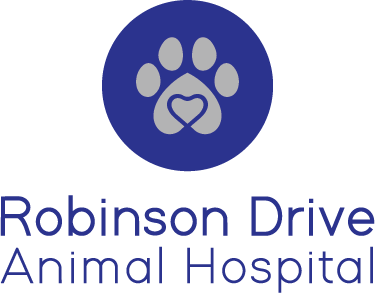Surgery
 We are pleased to offer our clients the highest quality veterinary care. We want nothing but the best for our clients, especially during surgery. It is our goal to make sure that our surgical team is prepared to offer our clients the latest medical procedures. We look forward to learning about the newest medical advances in surgery and actively partake in continued surgical education.
We are pleased to offer our clients the highest quality veterinary care. We want nothing but the best for our clients, especially during surgery. It is our goal to make sure that our surgical team is prepared to offer our clients the latest medical procedures. We look forward to learning about the newest medical advances in surgery and actively partake in continued surgical education.
We have cryosurgery as well as typical routine offerings. We also have a board certified surgeon who will travel to the practice to perform orthopedic surgery as well as other more complicated procedures.
Spay and Neuter
 Spaying and neutering are important and necessary medical procedures that enhance the quality of your pets’ life. Not only does spaying and neutering have positive effects on your pets’ health, it’s also vital to controlling the homeless pet population.
Spaying and neutering are important and necessary medical procedures that enhance the quality of your pets’ life. Not only does spaying and neutering have positive effects on your pets’ health, it’s also vital to controlling the homeless pet population.
Brachycephalic Obstructive Airway Syndrome and Treatment
What Is Brachycephalic Airway Obstructive Syndrome in Dogs?
Brachycephalic is a term that refers to dog breeds with shortened snouts and flat faces. The term brachycephalic comes from the Greek words brachy, meaning short, and cephalic, meaning head.
Brachycephalic airway syndrome refers to a specific combination of abnormalities affecting a dog’s airway and breathing, resulting from selectively breeding for this appearance. Their unique smooshed face is a result of shortened skull, facial, and nasal bones. This structural shortening of the face also results in anatomical changes to their throat and airways, creating brachycephalic airway syndrome.
Specifically, the condition refers to the combination of three functional abnormalities:
- Stenotic nares: Referring to narrow nostrils or small nostril openings. This results in a decreased ability to breathe through the nose and restricted airflow, which leads to increased panting and a higher risk of overheating.
- Elongated soft palate: The soft palate is the part of the roof of the mouth made up of tissue that separates the nasal passage from the oral cavity. Given brachycephalic dogs’ shorter snout, the soft palate is often too long for the length of their mouth. The excess flaps into the throat, causing snoring sounds and blocking airflow into the windpipe and lungs.
- Everted laryngeal saccules: In normal anatomy, there are two small pockets (saccules) in the back of the throat. In brachycephalic dogs, there is an increased effort to breathe due to the stenotic nares and elongated soft palate. This increased effort to breathe can cause the saccules to turn inside out and further block the airway.
Additional airway-related conditions to brachycephalic airway syndrome include:
- Hypoplastic trachea: This means the trachea, or windpipe, is congenitally smaller in diameter than normal. This can make it harder for dogs to breathe in enough air with each breath (like breathing through a straw).
- Laryngeal collapse: The larynx, or voice box, can become damaged by chronic stress to the cartilage from working too hard to breathe. Laryngeal collapse leads to more blockage of the airway, and potentially trouble breathing.

What are the clinical signs of brachycephalic airway syndrome?
Any of these upper airway abnormalities can cause increased airway resistance, increasing the effort required to inhale. Most dogs with this syndrome breathe more easily through their mouths than their noses. The more abnormalities present, the more severe the signs.
Mildly affected dogs will have noisy breathing, especially with exercise, and most will snort when excited and snore when relaxed or asleep. Severely affected dogs have more pronounced airway noise, appear to tire easily with exercise, and may collapse or faint after exercise. Other signs may include coughing, gagging, retching, and vomiting. Signs are often worse in hot or humid weather; affected dogs are more prone to overheating, as the ability to pant to lower body temperature is compromised. Dogs with impacts to their gastrointestinal tract may show signs including retching, vomiting, or lack of appetite.
Over time, dogs with this syndrome may develop other secondary problems, including inflammation of other structures in the airways. In the long term, the increased effort associated with breathing can put increased strain on the heart.
Treatment of Brachycephalic Airway Syndrome
Medical management may be an option if clinical signs are mild or infrequent. Excessive weight worsens the symptoms, so medical management for brachycephalic airway syndrome includes weight loss if your dog is overweight or obese. Heat and humidity can also worsen clinical signs, so care should be taken to limit time outside during hot summer days. Excessive exercise can increase stress of breathing and may exacerbate brachycephalic airway syndrome.
Corticosteroids, nonsteroidal anti-inflammatory drugs (NSAIDs), and oxygen therapy may all be useful for short-term relief of airway inflammation or respiratory distress. However, medical management of this condition does not correct the underlying anatomical abnormalities.
Surgery is the treatment of choice. Multiple procedures are usually required to alleviate the signs of brachycephalic airway syndrome, and include:
- Stenotic nares resection: Surgically widening the nostrils.
- Soft palate resection (staphylectomy): Surgical trimming of the soft palate to shorten the tissue.
- Laryngeal saccule removal: Removing the everted saccules. This is typically performed only in the most severe cases as many will resolve on their own once the airway is open.
All three procedures can be performed at the same time, and this is typically most recommended. Most dogs with brachycephalic airway syndrome are diagnosed by 4 years old, but surgical correction can be performed as early as 6 months of age. Early diagnosis and surgical intervention help reduce complications of chronic upper airway disease, such as developing laryngeal collapse. If you have a brachycephalic breed, discuss brachycephalic airway syndrome with your veterinarian, and if your dog is a possible candidate for surgery.
